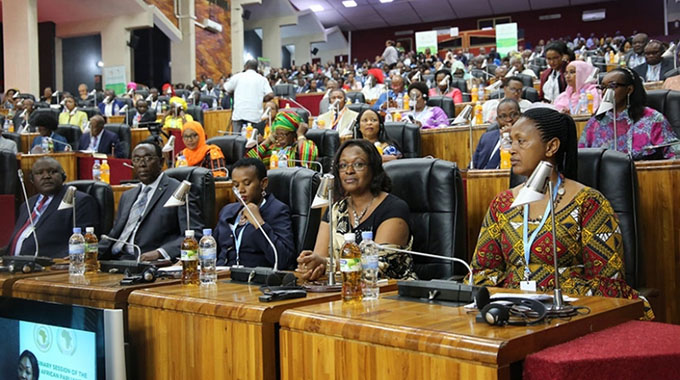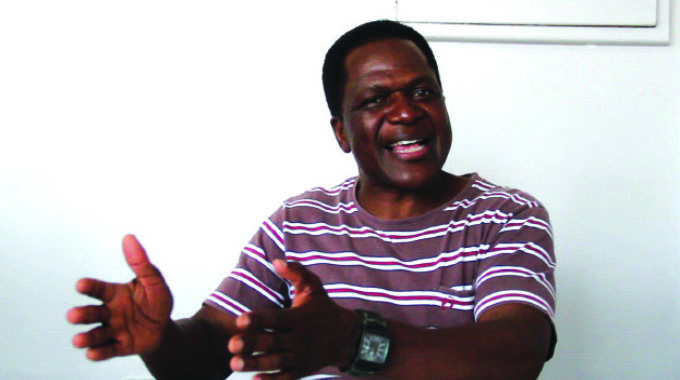Bending the curve towards gender equality by 2030

Roselyne Sachiti Features, Health & Society Editor
Sub-Saharan Africa is the only region, outside Latin America and the Caribbean, where countries have achieved or surpassed gender parity in a lower house of parliament.
According to the 2019 Equal Measures 2030 Sustainable Development Goals Gender Index, many sub-Saharan countries perform well on proportions of women in government.
Equal Measures 2030 is an independent civil society and private sector-led partnership that connects data and evidence with advocacy and action, helping to fuel progress towards gender equality.
The 2019 SDG Gender Index reveals that countries around the world — including high-income countries, Organisation for Economic Cooperation countries (OECD), and countries that rank in the top 10 places overall in the index — struggle when it comes to women’s representation in governing bodies.
However, in sub-Saharan Africa the gap between performance on indicators 5d and 5e and the other indicators in SDG 5: Gender Equality, is tighter.
According to the report, the region performs significantly better on both indicators than the Middle East and North Africa and Asia and the Pacific, and falls within 10 points of Latin America and the Caribbean and Europe and North America on both indicators.
Moreover, sub-Saharan African countries, Rwanda (61 percent), Namibia (46 percent), South Africa (42 percent), and Senegal (42 percent) all rank in the top 10 countries in the SDG Gender Index in terms of women in parliament.
When it comes to women in senior positions of government, more women in sub-Saharan Africa than in any region other than Europe and North America hold ministerial positions with key strategic portfolios, such as defence, foreign affairs, and finance, which have historically seen lower proportions of women taking office than other ministries (e.g. home, gender, education, or child and family welfare ministries).
Yet, a new research report, Bending the Curve also released by Equal Measures 2030 covering issues ranging from access to contraception, girls’ education, political leadership, workplace equality laws, and safety warns that half of countries studied (67 out of 129 countries) — home to 2,1 billion girls and women — won’t achieve any of five key gender equality targets by 2030 if their current pace continues.
To reach their findings, Bending the Curve uses five of the key gender equality issues in the 2019 SDG Gender Index to answer questions about the pace and nature of change towards gender equality.
These are sexual and reproductive health and rights, girls’ education, representation of women in leadership, laws on equality in the workplace, and safety.
Questions include “Are countries moving towards greater equality or in the wrong direction? What are the prospects for bending the curve to reach the gender equality promises laid out in the SDGs by 2030?”
The analysis finds that 67 countries won’t achieve any of the gender equality targets by 2030 if their pace of change continues.
More than a third of countries studied have been moving slowly — or even in the wrong direction — on at least four of the five issues over the past decade or two, the report points out.
Key Findings
The report reveals that at a global level, each issue is trending in the right direction, but that progress cannot be taken for granted.
Sadly, some countries are stagnating or even moving backwards on key issues.
“Globally, we are not even close to being on track to reaching these five key gender equality targets by 2030,” the report states.
The report points out that countries are not moving fast enough warning that at current rates of progress, no country will achieve all five or even four out of five targets by the SDG deadline.
“Only 24 countries will achieve two or three of the five targets and 38 countries will achieve only one of the five gender equality targets by 2030,” reads the report.
A full 67 countries (52 percent) will not achieve any of the five targets by 2030. If all countries matched the pace of the fast-moving countries, however, almost all countries studied (123 out of 129) would achieve at least two targets,” the report further warns.
The report also found out that several high-income countries are stagnating or even seeing reversals in progress on some issues.
Interesting is that while high-income countries tend to have higher levels of gender equality overall, a number of these richer countries have been moving at a very slow pace or even in the wrong direction on the issues studied.
For example, Serbia and Japan saw access to family planning decrease over the past two decades.
It is clear that progress is evident, but not always steady. For instance, the pace of change in women’s representation in ministerial roles globally grew more quickly from 2000 to 2008, but has slowed down since 2008, according to the report.
Countries in North America and Europe that had the highest proportion of women ministers in 2001 (holding at least 20 percent of cabinet roles) have since seen slower rates of progress towards parity than in the region overall.
Focusing issue by issue, some countries have made rapid progress towards gender equality over the past 10 to 20 years.
For example, several countries (including Ghana, Angola, Belize, and Vietnam amongst others) have been increasing the number of girls who complete secondary school by more than 10 per cent per year since around 2000.
Factors contributing to rapid progress vary by issue and by country, but common themes include government prioritisation and commitment, coordinated investment, implementation of equality-focused policies including quotas, and the influence of gender equality advocates and champions (including feminist movements).
Equal Measures 2030 says systematic research about the factors behind the fast-moving countries on each issue is beyond the scope of this study, but represents an important angle for future investigation.
Key Findings by Issue
According to the report, progress on access to family planning needs to accelerate globally by three times to reach the target by 2030.
This would lead to over 400 million more girls and women having access to contraception to plan if and when they have children than if the current pace continued to 2030.
The world also needs to move three times faster than it has over the past 10 to 15 years to ensure that every girl completes secondary school by 2030.
According to the report, 85 million more girls would complete secondary school by 2030 if countries moved at this accelerated pace than if the current pace continues.
Just 23 percent of government minister posts globally are held by women.
Seventy-seven million girls and women live in countries that do not have a single female minister.
More than 650 million girls and women in 64 countries have never had an elected or appointed female head of state or government. Progress on this issue has slowed in recent years and 40 countries have moved backward since 2001.
Progress needs to accelerate by nearly two times to ensure women are equally represented in the most powerful political positions by 2030. There is need for renewed efforts to reach the most vulnerable.
If anything, girls and women facing intersecting forms of discrimination are most likely to be left behind, even when progress is made for girls and women overall.
There is hope: some countries — across all regions of the world — are already moving at an accelerated pace on one or more of the five key gender equality issues studied.








Comments